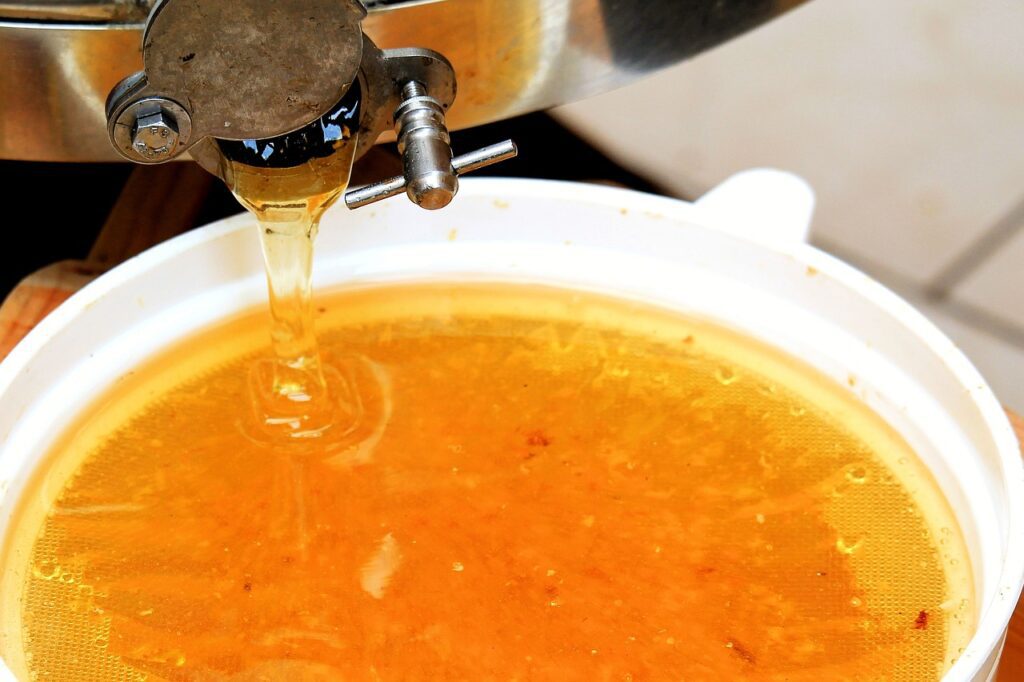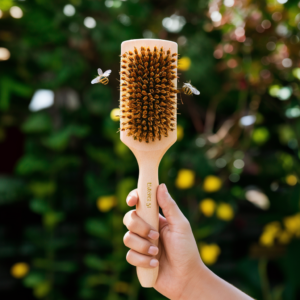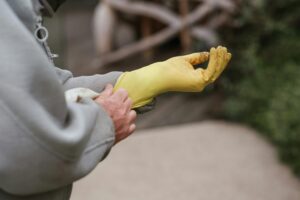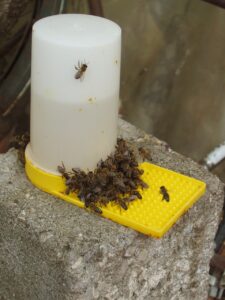Hive frames are essential components of a beehive, providing the structure needed for bees to build their comb and store honey. These frames, which fit into the hive’s super or brood boxes, come in various materials and sizes, each with its own set of benefits and considerations. Selecting the right frames is crucial for maintaining hive health and ensuring efficient honey production. In this guide, we’ll explore the ten key factors to consider when choosing frames, from material quality to compatibility, helping you make informed decisions for optimal hive management.

Table of Contents
What Are Hive Frames?
Frames are crucial components within beehives, designed to hold the comb where bees build their honey and brood (larvae and pupae). They fit into the hive’s super or brood boxes and provide a structured, removable unit that helps beekeepers manage their hives efficiently.
Purpose and Functionality
Frames support the bees’ natural comb-building process by providing a foundation. They ensure the hive remains organized, making it easier for beekeepers to inspect, manage, and harvest honey. Frames are designed to be easily removable so that beekeepers can access and manipulate the combs without disturbing the hive too much.
Frame Components
Typically, a frame consists of a wooden or plastic outer frame and a foundation insert. The foundation provides a starting point for the bees to build their comb. Foundations come in different types, such as plastic or wax, and can be either pre-waxed or unwaxed.
Types of Frames
Frames come in various sizes and types to accommodate different hive configurations. For instance, Langstroth hives use deep, medium, or shallow frames, while Warre hives use vertical frames. Each type serves a specific purpose and fits different hive setups.
Understanding the role and functionality of frames helps beekeepers make informed decisions about their selection and usage.
1. Material Quality
Wood vs. Plastic Frames
Plastic Frames
Durability and Maintenance
Plastic frames are becoming increasingly popular due to their durability and ease of maintenance. They are less likely to warp, crack, or decay compared to wooden frames, making them a reliable choice for beekeepers seeking longevity. Plastic frames also require less upkeep, as they can be easily washed and sanitized without concern for material degradation.
Ease of Cleaning
Plastic frames are generally easier to clean than wooden frames. Their non-porous surface does not absorb honey, wax, or propolis, simplifying the cleaning process. This ease of maintenance can contribute to better hive hygiene and more efficient hive management.
Beekeeper Preferences
Some beekeepers prefer plastic frames for their practicality and durability. However, it’s worth noting that plastic frames may lack the natural benefits that wooden frames offer. For example, some beekeepers believe that the natural properties of wood can positively influence bee behavior and comb-building processes.
Wooden Frames

Durability and Longevity
Wooden frames, typically made from cedar, pine, or other hardwoods, are traditional and widely used. They offer a natural feel and provide good insulation for the hive. However, wooden frames can be prone to warping, cracking, and decay if not properly maintained. High-quality wood frames can be very durable but may require regular inspection and treatment to extend their lifespan.
Natural Benefits
Wooden frames are valued for their natural properties, which some beekeepers believe can benefit the hive. The natural insulation provided by wood can help maintain a stable hive temperature, which is important for brood development and honey production. Additionally, wood is a material that bees are accustomed to, and some beekeepers think this natural familiarity can influence bee behavior and the comb-building process positively.
Impact on Hive Health
The material of wooden frames can impact the hive’s overall health. Frames made from untreated or poor-quality wood may introduce contaminants or degrade over time, potentially affecting hive health and honey quality. It is crucial to use wood that is non-toxic and safe for bees, and to treat or seal wooden frames as needed to prevent damage and contamination.
Maintenance Considerations
Wooden frames require more maintenance compared to plastic frames. Regular inspection for signs of wear, such as warping or decay, is necessary to ensure that the frames remain in good condition. Proper care, including cleaning and treating the wood, can help prolong the life of wooden frames and maintain a healthy hive environment.
2. Frame Size
Langstroth vs. Warre vs. Top-Bar Frames
6 Types of Hives – Bee Keeping – Proven Apiculture Practices

- Langstroth Frames: The Langstroth hive is the most common type of beehive, and its frames come in various sizes: full-depth, medium, and shallow. Full-depth frames are larger and ideal for honey production, while medium and shallow frames offer versatility and ease of handling.
- Warre Frames: Warre hives use vertical frames and are designed for natural beekeeping. These frames are often smaller and more suited to traditional or minimal-intervention beekeeping practices. Warre frames are typically used in vertical hive systems and require different management techniques compared to Langstroth frames.
- Top-Bar Frames: Top-bar hives use a different approach, with frames that hang from the top bars of the hive. These frames often have a simpler design and are used in hives that emphasize natural comb building. Top-bar frames require careful consideration of their dimensions and compatibility with the hive’s design.
Matching Hive Size
Selecting frames that match your hive size is crucial for proper hive management. Incorrectly sized frames can cause difficulties in handling and honey extraction. Ensure that the frames are compatible with the hive’s dimensions to maintain an efficient and functional beekeeping setup.

Customization Options
Custom-sized frames can be beneficial if you have specific needs or unique hive modifications. Custom frames allow for adjustments based on the hive’s design or your personal preferences, ensuring a perfect fit and optimal performance.
3. Foundation Type
Plastic Foundation
Plastic foundations are pre-manufactured and come with several benefits, including durability and ease of cleaning. They are often more resistant to wear and tear compared to wax foundations and can be reused multiple times. Plastic foundations are ideal for beekeepers who prioritize convenience and longevity.
Benefits
- Durability: Plastic foundations are highly durable and can withstand repeated use. They resist bending, cracking, and other forms of wear.
- Ease of Cleaning: They are easy to clean and sanitize, as their non-porous surface does not absorb honey, wax, or propolis.
- Longevity: Plastic foundations can be reused multiple times, reducing the need for frequent replacements.
- Maintenance: Minimal maintenance is required compared to wax foundations. They do not need to be re-waxed or treated regularly.
Considerations
- Bee Behavior: Some beekeepers feel that plastic foundations may influence bee behavior differently than natural wax.
- Initial Cost: Plastic foundations may have a higher upfront cost, but they can be more economical over time due to their durability.
Wax Foundation
Wax foundations are traditional and help encourage bees to build comb in a natural manner. They can be either pre-waxed or unwaxed, depending on the beekeeper’s preference. Wax foundations may need to be replaced more frequently and can be less durable than plastic options.
Benefits
- Natural Comb Building: Wax foundations encourage bees to build comb in a natural manner, aligning with traditional beekeeping practices.
- Bee Familiarity: Bees are more accustomed to working with wax, which can lead to more effective comb construction and hive management.
- Thermal Properties: Wax provides natural insulation, which can help maintain stable hive temperatures.
Considerations
- Durability: Wax foundations are less durable than plastic and may need to be replaced more frequently due to wear and tear.
- Maintenance: Regular re-waxing and maintenance are necessary to keep the foundation in good condition.
- Cost: Wax foundations may involve ongoing costs for replacement and maintenance.
Combination Foundations
Some frames feature a combination of plastic and wax, offering the benefits of both materials. These hybrid foundations can provide a balance between durability and natural comb-building characteristics. They are designed to be more flexible and adaptable to different beekeeping practices.
Benefits
- Balanced Durability: Combination foundations offer the durability of plastic with the natural comb-building benefits of wax. They provide a balanced approach to frame construction.
- Flexibility: These hybrid foundations can adapt to different beekeeping practices, making them versatile for various hive management styles.
- Enhanced Comb Building: The combination of materials can support more effective comb construction while maintaining frame longevity.
Considerations
- Complexity: Combination foundations may be more complex to manufacture and manage compared to single-material options.
- Cost: They might be more expensive due to the integration of both plastic and wax materials.
- Compatibility: Ensure that combination foundations are compatible with your existing hive setup and frames.
4. Frame Type
Full-Depth Frames
Full-depth frames are the largest size and are often used in honey supers. They hold more honey, making them suitable for beekeepers who aim to maximize honey production. Full-depth frames can be heavier and more challenging to manage but offer the advantage of increased honey storage capacity.
Medium Frames
Medium frames are versatile and used for both brood boxes and honey supers. They offer a good balance between size and manageability, making them a popular choice for many beekeepers. Medium frames are easier to handle than full-depth frames and provide sufficient space for honey and brood.
Shallow Frames
Shallow frames are smaller and lighter, making them easier to handle and less cumbersome during hive inspections. They are commonly used for honey supers and are ideal for beekeepers who prefer lighter components. Shallow frames also facilitate easier honey extraction and management.
5. Bee Space
Correct Bee Space
The correct bee space is essential for the efficient functioning of the hive. Proper spacing ensures that bees can move freely between frames, build comb effectively, and avoid issues like burr comb or propolis buildup. Incorrect bee space can hinder hive operations and affect overall productivity.
Impact on Hive Function
Frames with incorrect bee space can disrupt hive health and efficiency. Bees may build excess comb or become congested, leading to difficulties in hive management and honey production. Ensuring proper bee space helps maintain a well-organized and functional hive.
Adjustable Spacing
Some frames come with adjustable bee space options, allowing beekeepers to customize the spacing according to specific hive needs. Adjustable frames offer flexibility and can accommodate different beekeeping practices and preferences.
6. Ease of Cleaning
Smooth Surfaces
Frames with smooth surfaces are easier to clean and maintain. They are less likely to retain honey, wax, or propolis, which can affect hive hygiene and productivity. Smooth surfaces also reduce the time and effort required for regular cleaning.
Material Considerations
Plastic frames are generally easier to clean than wooden frames, which may absorb honey and wax. Beekeepers should consider the cleaning requirements of different materials when selecting frames. Choosing materials that facilitate easy cleaning can improve overall hive management.
Maintenance Tips
Regular cleaning of frames is crucial for preventing the buildup of pathogens and pests. Follow manufacturer recommendations for cleaning and maintaining frames to ensure their longevity and effectiveness. Proper maintenance helps preserve frame quality and supports healthy hive conditions.
7. Assembly
Pre-Assembled Frames
Pre-assembled frames are convenient and save time, as they come ready to use. They are typically more expensive but simplify the setup process and reduce preparation time. Pre-assembled frames are a good choice for beekeepers who prioritize efficiency.
DIY Assembly
Frames that require assembly offer a cost-saving option and allow for customization. Beekeepers should be prepared to invest time and effort in assembling frames, including adding foundation and ensuring proper fit. DIY assembly can be rewarding and allows for greater control over frame specifications.
Ease of Assembly
Frames that are easy to assemble and fit together well can reduce the time spent preparing hives. Look for frames with straightforward assembly instructions and components. Easy assembly contributes to a smoother beekeeping experience and efficient hive management.
8. Compatibility
Existing Hive Equipment
Ensure that the frames are compatible with your current hive equipment, including supers and brood boxes. Compatibility issues can lead to inefficiencies in hive management and honey extraction. Choosing frames that fit seamlessly with existing equipment helps maintain a smooth operation.
Standardization
Frames that adhere to industry standards ensure compatibility with other beekeeping tools and equipment. Standard frames are more widely available and easier to replace or upgrade. Adhering to standard dimensions and designs simplifies the beekeeping process and ensures consistency.
Custom Options
If you use custom hive setups, verify that frames are available in the required sizes and configurations. Custom frames should fit perfectly with your unique hive design. Consider custom options if standard frames do not meet your specific needs.
9. Cost
Budget Considerations
Compare frame prices within your budget to find the best value. Higher-quality frames may have a higher upfront cost but can offer better durability and performance, potentially saving money in the long run. Assess your budget and determine the best investment for your beekeeping needs.
Value for Money
Evaluate the value of the frames relative to their cost. Consider factors such as durability, ease of use, and maintenance requirements when assessing cost-effectiveness. Investing in high-quality frames can provide better performance and longer-term savings.
Bulk Purchase Discounts
Buying frames in bulk can result in significant cost savings. Many suppliers offer discounts for larger orders, which can be particularly beneficial for beekeepers managing multiple hives. Consider purchasing frames in bulk to reduce the per-unit cost and take advantage of volume pricing.
Long-Term Investment
While it might be tempting to opt for cheaper frames initially, investing in high-quality frames can be more economical in the long run. Durable frames reduce the need for frequent replacements and can enhance overall hive productivity. Evaluate the long-term benefits of investing in quality frames versus short-term savings on cheaper options.
10. Manufacturer Reputation
Quality Assurance
Choosing frames from reputable manufacturers ensures higher quality and reliability. Established brands are known for their consistent product quality and adherence to industry standards. High-quality frames from reputable manufacturers contribute to better hive management and fewer issues.
Customer Reviews
Checking customer reviews and feedback provides insights into the performance and durability of the frames. Positive reviews from other beekeepers can indicate that the frames meet expectations and offer good value. Reading reviews helps gauge overall satisfaction and identify any potential concerns.
Warranty and Support
Manufacturers that offer warranties and customer support demonstrate confidence in their products. A warranty can provide peace of mind and protect your investment. Additionally, responsive customer support can assist with any issues or concerns that arise with the frames.
Reputation in the Beekeeping Community
Consider the reputation of the manufacturer within the beekeeping community. Brands with a strong presence and positive feedback from experienced beekeepers are more likely to produce reliable and effective frames. Engaging with local beekeeping groups or forums can provide recommendations and insights.
Additional Resources
USDA PROGRAMS AND RESOURCES TO SUPPORT BEEKEEPERS
Conclusion
Choosing the right frames is a fundamental aspect of successful beekeeping. By considering factors such as material quality, frame size, and ease of maintenance, you can ensure that your hive remains organized and productive. Whether you opt for plastic frames for their durability or wooden frames for their natural benefits, understanding the impact of each choice on your hive’s health and efficiency will lead to better management and improved honey production. With this comprehensive guide, you’re equipped to make informed decisions and enhance your beekeeping experience, ultimately contributing to a thriving hive and successful honey harvests.



